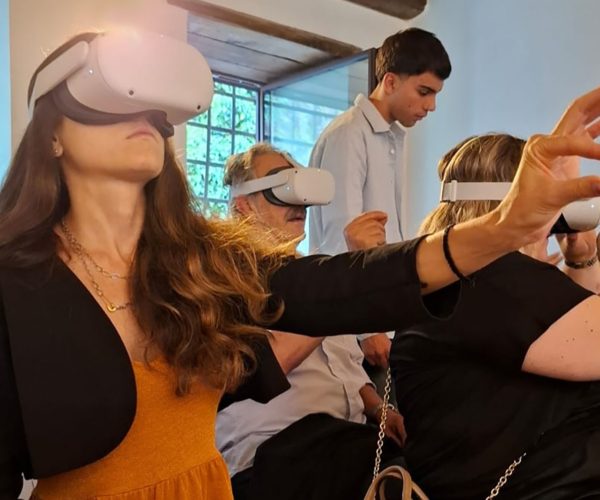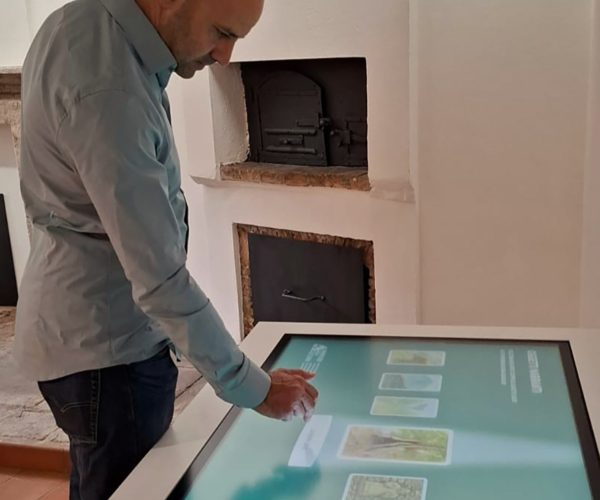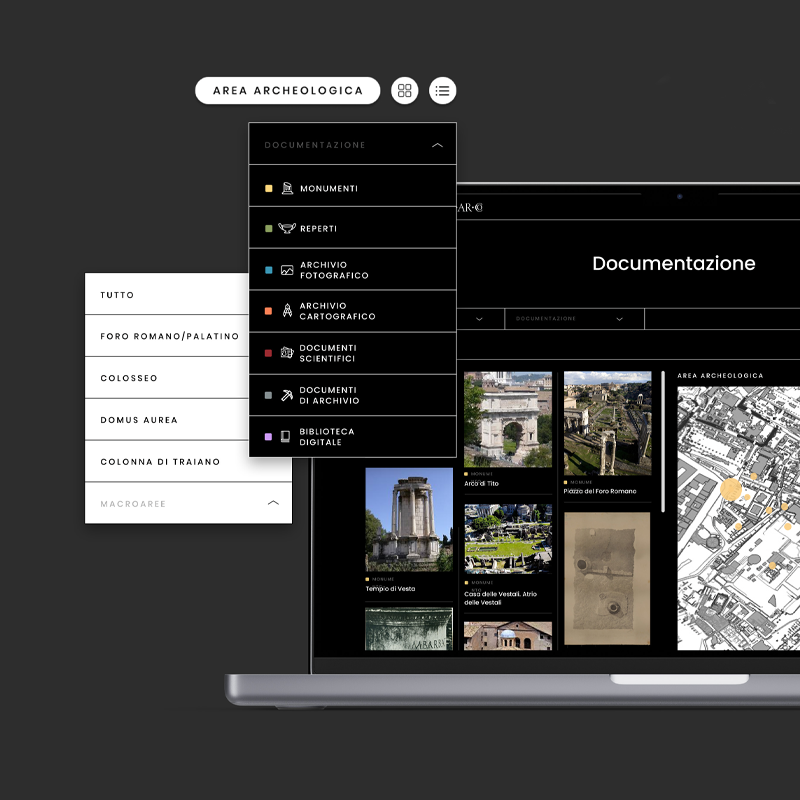The Multimedia Museum of the Way of Guglielmo

In the heart of Irpinia, among the mountains and paths that have welcomed pilgrims for centuries, lies the Cammino di Guglielmo, a route that connects places of spirituality, nature and memory. It is along this route that the Multimedia Museum of Chiusano di San Domenico was created, a new exhibition space dedicated to recounting the life and journey of Guglielmo da Vercelli, the founder of the Abbey of Montevergine and a symbolic figure of medieval pilgrimage in southern Italy.
Visivalab oversaw the design and creation of five multimedia installations within the museum, ranging from touch screens and virtual reality headsets to conversational avatars and a room with immersive video projection, guiding visitors on a journey of discovery through history via digitalisation and multimedia innovation.
To complete the project, Visivalab developed the app for Guglielmo’s Way, a digital guide that extends the experience beyond the museum rooms, allowing travellers and visitors to explore the places along the route and learn more about their historical and cultural significance.
CLIENT: Municipalities of Chiusano di San Domenico and Ospedaletto d’Alpinolo
YEAR: 2025
CARACTERÍSTICAS
- Digitalisation of heritage
- 3D reconstruction
- Storytelling creation
- Multimedia content
- Virtual reality
- Conversational avatar
- Artificial intelligence
- Interactive touch screen stations
- Georeferenced mobile app
- UX-UI
- Interaction design
Project
The Multimedia Museum of Guglielmo’s Journey was created as part of the PNRR – Attractiveness of Villages with the aim of offering visitors an interactive and immersive experience that combines cultural dissemination and technological innovation.
Visivalab oversaw the entire process, from preliminary design to the production of multimedia installations and the app, integrating storytelling, graphics, interaction design, 3D modelling and artificial intelligence skills.


MUSEUM INSTALLATIONS
The exhibition itinerary is divided into several installations:
-
Immersive projection: visitors experience an immersive room where a narrative video about the saint’s life and journey envelops them on four walls. Thanks to the use of four projectors and Minimad computers connected to each other in a network, the experience is total and engaging.
-
Multimedia library: the multimedia library is a 55-inch Full HD touchscreen, designed as a digital archive and structured in three sections: digitised volumes, videos and historical photographs.
The system has been developed to ensure smooth and accessible navigation. The interface design prioritises order, readability and immediacy, making an unprecedented documentary heritage accessible to all. -
Table of narrative objects: a 55-inch touchscreen monitor that, through free navigation, allows visitors to view seven narrative videos that reveal objects related to the iconography and miracles of William.
-
Virtual avatar of Guglielmo: an interactive station that is activated by voice command to answer a series of questions that visitors can read aloud to receive direct answers from the Saint in a conversational manner.
-
Virtual reality headsets: allow you to immerse yourself in the most significant places along the Way, with particular attention paid to the reconstruction of the 3D model of the Hermitage of Santa Maria della Valle.
TECHNICAL INFORMATION
SOFTWARE
- Metashape
- SketchUp
- Vue
- Madmapper
- Unity
- React Native
- Mapbox
- HeyGen
- Murf AI
HARDWARE
- Projectors
- Meta Quest 2 headsets
- Monitor touch
- Raspberry Pi
- Minimad
VIRTUAL AVATAR
A distinctive feature of the museum is the interactive avatar of Guglielmo, a virtual character developed by Visivalab, ready to interact with visitors. The avatar represents Guglielmo da Vercelli at the age of fourteen, at the moment when he decides to embark on his journey to Santiago de Compostela. The aesthetic reconstruction has been carefully crafted down to the smallest detail: clothing, accessories and colours refer to the iconography and historical context of medieval pilgrimage, giving the character credibility and visual consistency.
The avatar is the result of artificial intelligence and interaction design. The avatar is activated and interacted with exclusively through voice, as visitors can ask William questions and receive real-time answers about episodes from the Camino and the miracles he performed. The conversational AI component has been designed to ensure a natural and coherent dialogue experience, formulating responses in language calibrated to the character’s youthful and friendly tone of voice.


OCULUS WITH VIRTUAL REALITY
Visivalab focused in particular on the 3D reconstruction of the Hermitage of Santa Maria della Valle, which can be experienced using the latest generation of Oculus headsets.
The model presents two variants of the same architectural structure: the hermitage as it was in the past and as it is today. Following the scientific, historical and artistic reconstruction work carried out by expert Dr Sandro De Rosa, Visivalab oversaw the reconstruction of the model of the Hermitage to show the evolution of its architectural forms over time.
In addition, to restore the model to its current form, Visivalab used 3D modelling and realistic texturing to digitise and virtually restore the site, allowing the hermitage to be viewed from new perspectives and its historical and spiritual value to be appreciated, combining research, technology and visual storytelling.

JOURNEY APP
To complete the museum experience, Visivalab has developed the “Cammino di Guglielmo” app, a tool designed to accompany visitors beyond the museum rooms and along the actual route of the journey thanks to its georeferenced navigation functionality. The aim is to offer every traveller a digital guide that is always at their fingertips, combining practical information and cultural content in a single integrated experience.
The app echoes the structure and visual language of the official Cammino website, ensuring graphic continuity and consistency of use across different platforms, allowing users to easily navigate the stages of the route, explore places linked to Guglielmo’s life and access historical insights, descriptions, dynamic maps and multimedia materials.
THE PRESS
Apre il nuovo museo multimediale a Chiusano
Cammino di Guglielmo
Musei multimediali
Cammino di Guglielmo
In Irpinia un museo multimediale sul Cammino di Guglielmo
Cultura borghi
Apre a Chiusano il Museo immersivo di San Guglielmo
Telenostra



